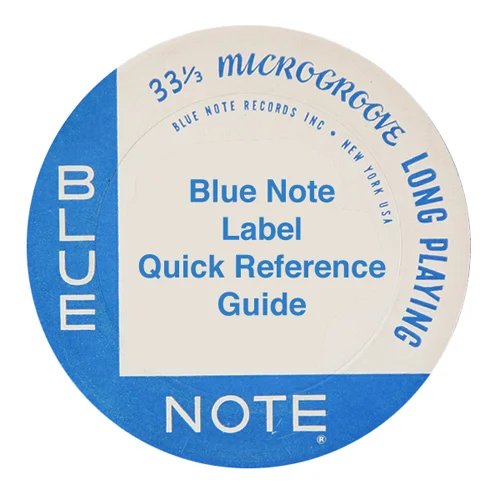A Genius At Work: Charles Mingus - "Mingus, Mingus, Mingus, Mingus, Mingus"
/Charles Mingus • Mingus Mingus Mingus Mingus Mingus • 1964 • Impulse! Records
Recorded January 20 & September 20, 1963 in New York City
The Selection:
The Tracks:
A1. II B.S.
A2. I X Love
A3. Celia
A4. Mood Indigo
B1. Better Get Hit In Yo' Soul
B2. Theme For Lester Young
B3. Hora Decubitus
The Players:
On A2 & A3:
Charles Mingus - Bass, Piano
Jerome Richardson - Baritone Sax, Soprano Sax, Flute
Dick Hafer - Tenor Sax, Flute
Charlie Mariano - Alto Sax
Rolf Ericson - Trumpet
Richard Williams - Trumpet
Quentin Jackson - Trombone
Don Butterfield - Contrabass Trombone, Tuba
Jay Berliner - Guitar
Jaki Byard - Piano
Dannie Richmond - Drums
On A2, A4, B1, B2, & B3 :
Charles Mingus - Bass
Dick Hafer - Tenor Sax, Flute, Clarinet
Jerome Richardson - Baritone Sax, Soprano Sax, Flute
Booker Ervin - Tenor Sax
Eric Dolphy - Alto Sax, Flute
Eddie Preston - Trumpet
Richard Williams - Trumpet
Britt Woodman - Trombone
Don Butterfield - Tuba
Jaki Byard - Piano
Walter Perkins - Drums
The Record:
Mingus, Mingus, Mingus, Mingus, Mingus was Charles Mingus' last major studio recording of the 1960s (the solo Mingus Plays Piano would also be released in 1964) and it's a real treasure in the great jazz bassist's discography. Two of the tracks ("Celia" and "I X Love") were recorded at the sessions for The Black Saint And The Sinner Lady, while the rest were laid down eight months later with a group that included Booker Ervin, Eric Dolphy and Jaki Byard (Byard also played on the two earlier tracks). Both sessions featured groups of eleven players, all of whom were in top form in performing Mingus' notoriously complex compositions.
All but two tracks on Mingus, Mingus, Mingus, Mingus, Mingus were re-interpretations of songs from the bassist's earlier catalog, only "Celia" rates as a new original number, and "Mood Indigo" is a cover of the famous tune by Mingus's hero Duke Ellington . If you happen to have lost your Mingus decoder ring, the remaining tracks correlate to their past counterparts as such:
II B.S. = Haitian Fight Song
I X Love = Nouroog
Better Get Hit In Yo' Soul = Better Git It In Yo' Soul
Theme For Lester Young = Goodbye Pork Pie Hat
Hora Decubitus = E's Flat Ah's Flat Too
The album features the two sides of Mingus' compositional genius: the beautiful balladry that I always feel has a bit of a film-noir feel to it, alongside those joyous upbeat numbers that are filled with an organized chaos that categorizes much of the bassist's best work. You know, that moment when it feels like everything could just fall apart, and yet it never does, it just continues to flow with all the musicians falling into their set place. This is especially apparent on MIngus, Mingus, Mingus, Mingus, Mingus with it's large ensemble of musicians - often referred to in reviews as a "big band" although I feel that is a bit misleading - who follow Mingus and arranger Bob Hammer to the edge of genius yet never go over. It is noted on the back cover that the music on the album is "Ethnic Folk-Dance Music" and while it will always be jazz music to me, I can see how the complexity of some of the compositions might lead some to feel it is a bit more "heady" than your average jazz record.
I'm definitely a Charles Mingus devotee, his music was one of my first introductions to the jazz world outside of Miles, Coltrane and Monk and as such I devoured the music in his vast catalog. MIngus, Mingus, Mingus, Mingus, Mingus has always been one of my favorite albums by him, the one that I find myself returning to the most when I need a Mingus fix. Mingus Ah Um and The Black Saint and The Sinner Lady are the two Mingus recordings generally regarded as his masterpieces, and while I'd have a hard time arguing against either one having that designation, this album just seems to me to the perfect summation of the many talents that Mingus possessed as a composer and musician. Throw in the fact that it also features Jaki Byard (who is just phenomenal on this recording and remains criminally underrated), Booker Ervin, Dannie Richmond and Eric Dolphy and you have some of MIngus' finest sidemen driving his compositions to the fantastical places they seemed preordained to go.
A Quick Aside On Mingus and Eric Dolphy:
Mingus and Dolphy knew each other from growing up together in Los Angeles, and Dolphy quickly became part of the Charles Mingus Quartet when he arrived in New York City in 1959. He appears on the Candid album Charles Mingus Presents Charles Mingus as well as the great live recording Mingus At Antibes. Dolphy parted ways with Mingus for a bit and formed his fruitful partnership with John Coltrane that resulted in the 1961 live recordings from the Village Vanguard. When he hooked back up with Mingus in 1963 to record Mingus, Mingus, Mingus, Mingus, Mingus he stuck around to be an important part of The Charles Mingus Sextet that would go on to tour Europe in 1964 (which also included Jaki Byard and Dannie Richmond from the Mingus, Mingus, Mingus, Mingus, Mingus recording). It was during this tour that Dolphy informed Mingus that he was going to remain in Europe once the tour was completed, which was why Mingus named the blues number the group had been performing on the tour "So Long Eric", a goodbye to his friend not returning to New York with the group.
Charles MIngus & Eric Dolph Performing Live. Exact Date Unkown.
"So Long Eric" is often thought to be a memorial song, as Dolphy would tragically die in June of 1964 while performing in Berlin, a few months after the tour with Mingus ended. He was only 36 and while the exact events behind his death are disputed, it is generally accepted that his death was ultimately the result of a coma due to a diabetic condition. There are quite a few recorded documents of the fantastic Charles Mingus Sextet's live performances on their European tour, all of which serve as lasting testaments to Dolphy at the peak of his powers. For those unfamiliar, I recommend both the 3-LP set The Great Concert Of Charles Mingus on Prestige (documenting a Paris concert appearance) and the 2007 Blue Note CD release Cornell 1964, an absolute stunner of a recording of the sextet at Cornell University prepping for the upcoming European tour. Dolphy died much too young, and as with so many great talents in jazz, we are only left to wonder where he might have taken the music had he not left us so early.
The Vinyl:
My copy is an original stereo pressing on the beautiful orange and black label with the Impulse! name printed four times around the outside edge. As this record dates from 1964 it has "A Product Of ABC-Paramount, Inc." below the song titles. It is thick vinyl that sounds absolutely fantastic coming through the speakers. I picked this up about 20 years ago for right around $20 at a time when the interest in vintage vinyl hadn't experienced the resurgence it is experiencing today. Considering original stereo copies are going for between $70 and $150 on eBay these days, I'd say I got a pretty good deal. A nice benefit of having been in the vintage vinyl game for so many years, despite the money I've parted with over that time.
Interestingly, this title can also be found with a Capitol catalog number and the text "Mfd. by Capitol Records, Inc., USA" that according to London Jazz Collector were issued as part of Capitol's mail order record club. There must have been quite a few of these pressed up as they show up on eBay fairly often. I've personally never heard these record club pressings, and since LJC notes that these were pressed at Capitol's plant in Scranton, I can't speak to whether they sound as crisp and clean as an "original" Impulse! pressing. My educated guess is that they sound fine, but are probably pressed up on a lighter weight vinyl to save some pennies.
The vinyl trail-off has "AS-54-A" and "AS-54-B" hand-etched on the respective sides, as well as the machine stamped "VAN GELDER" and "STEREO" appearing on both sides. There is also the small hand-etched "LW" on both sides, which London Jazz Collector says indicates that the metalwork was done by the Longwear Plating Company.
Even though The Black Saint and The Sinner Lady is cited as one of Mingus' finest achievements, his Impulse! output is often overlooked when it comes to his long and varied discography. Perhaps with such a long and distinguished discography it is only inevitable that some periods would be overshadowed. In any case, Mingus, Mingus, Mingus, Mingus, Mingus is a record that has more than stood the test of time and is an everlasting testament to the talents of Mingus and the players who had the ability to follow his musical vision.












